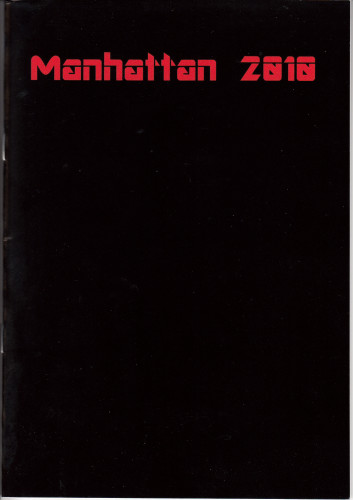I have in my hands something that’s probably destined to become one of the most obscure Finnish roleplaying books ever published. To be honest, it’s not even really a book, but a 24 page printed booklet. It’s called Manhattan 2010, and contains almost no information about its circumstances of publication, except for a foreword credited:
Helsingissä 21.11.2014
Jonas Mustonen
Jukka Hämäläinen
From social media, I’ve gathered that the booklet is only available directly from the authors, and the print run is in the low tens.
Manhattan 2010 raises interesting questions about what is the history of roleplaying games. The original Manhattan 2010 was a childhood roleplaying game in which the authors participated. It was based on the classic Finnish translation of the Dungeons & Dragons red box, and featured an Escape From New York -style setting.
The booklet is an attempt to capture this childhood game, based on vague recollections, into a published work. According to the foreword: “The supplement called Manhattan 2010 has been compiled according to the best of our ability based on what we can remember.”
The history of tabletop roleplaying has traditionally been a history of publishing. We know of Gary Gygax and Vampire: the Masquerade. We know of published game books and the designers who wrote them. What gets lost in the shuffle tends to be the actual gaming experiences of the people who play these games.
Roleplaying is a co-creative medium, and this means that virtually no roleplaying game can be played without some creative input from the participants. My personal experience has been that the published book is more of a starting point for the participants’ own creativity. Looking only at published games ignores the actual circumstances of roleplaying.
The reasons for why tabletop roleplaying history is skewed this way is obvious. It’s much easier to write about published works than about the hundreds of thousands or millions of people who use those works to make their own games, and possibly never write about them anywhere. Writing a “People’s History of Roleplaying Games” would be a daunting task.
Nevertheless, Manhattan 2010 represents a small, personal attempt to do just that. It’s not a childhood concept polished for mass consumption, but a ragged little thing with all the weird edges still intact.
My favorite part is the description of cops: “This game doesn’t have orcs, but these guys are the closest equivalent if we’re looking for needlessly violent people who won’t listen to any explanations.”

For some reason we’ve had larp documentation for a few years now, and know more and more about the kind of larps being played around the world. Tabletop roleplaying lacks this tradition almost completely.
Shall we challenge each other to document influential tabletop gaming experiences next year?